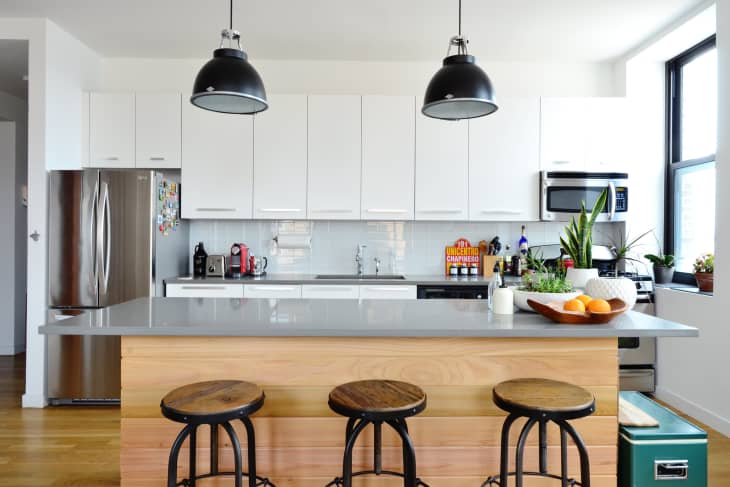A Brief History of the Kitchen Island

Thanksgiving is arguably the star holiday of the cooking world. And, apart from the oven, there’s no other kitchen feature that gets more play during this time of year quite like the island—whether built-in or freestanding. Before you gather around yours this year, take a moment to appreciate how this modern day kitchen staple came to be the status symbol that it has become (because it hasn’t always been that way).
Shortly after World War II, popular home design shifted from closed floor plans to open concept spaces (sound familiar?) designed to make the work within the home more efficient and less labor-intensive. An expansive, wide-open kitchen meant that dinner could be prepared while children in the family room were in clear view. Once dinner was ready, everyone could eat in the kitchen itself rather than the more formal dining room, making it easier for the host to serve and manage the meal. But with all of the benefits an open concept floor plan presented, it came with challenges, namely a shortage of storage and counter space. Thus, the kitchen island was born.
The kitchen island became a solution to space challenges, providing more surface area, storage potential, and a place for folks to congregate while others were cooking (plus, as we well know now, it also serves the purpose of separating the kitchen from living areas in absence of walls).
And fortunately for interior design enthusiasts everywhere, the benefits of kitchen islands don’t stop at basic practicality; they also happen to be full of aesthetic-enhancing potential.
We asked a few interior designers and tastemakers to chime in on the wonder that is the modern-day kitchen island:
According to Anne Sage, the interior designer behind the amazing kitchen above, “Homeowners are becoming more aware of the kitchen as a space to display their treasures. I’m seeing tons of islands with built-in open shelving; a great way to get those vintage ceramics or antique silver collections out of the cupboards and into full sight where they belong!”
Cara Irwin, founder of lifestyle blog Goldalamode, sees kitchen islands, “as an area to add some fun. One of my favorite ways to do this is to add color to the back of the island. Picture this: white cabinets with the back part of the island painted a pretty dark blue or green. It injects color but is still tamed and classic.”
When it comes to the design of a kitchen island itself, there are endless designs to choose from, no matter your unique style sensibility.
Cara is a fan of using a tile on the back of the island as “a great way to add texture and pattern while also creating an upscale but fun atmosphere.”Emily Ruff, founder of the lovely interior design site Cohesively Curated say she likes to infuse kitchen islands with even more style using three methods: “Include architectural details, contrasting materials, and [her favorite trend] a waterfall countertop that extends all the way to the floor.”
Given the abundant benefits in both form and function, it’s no surprise that the kitchen island has become the star of the kitchen for homeowners and designers alike.